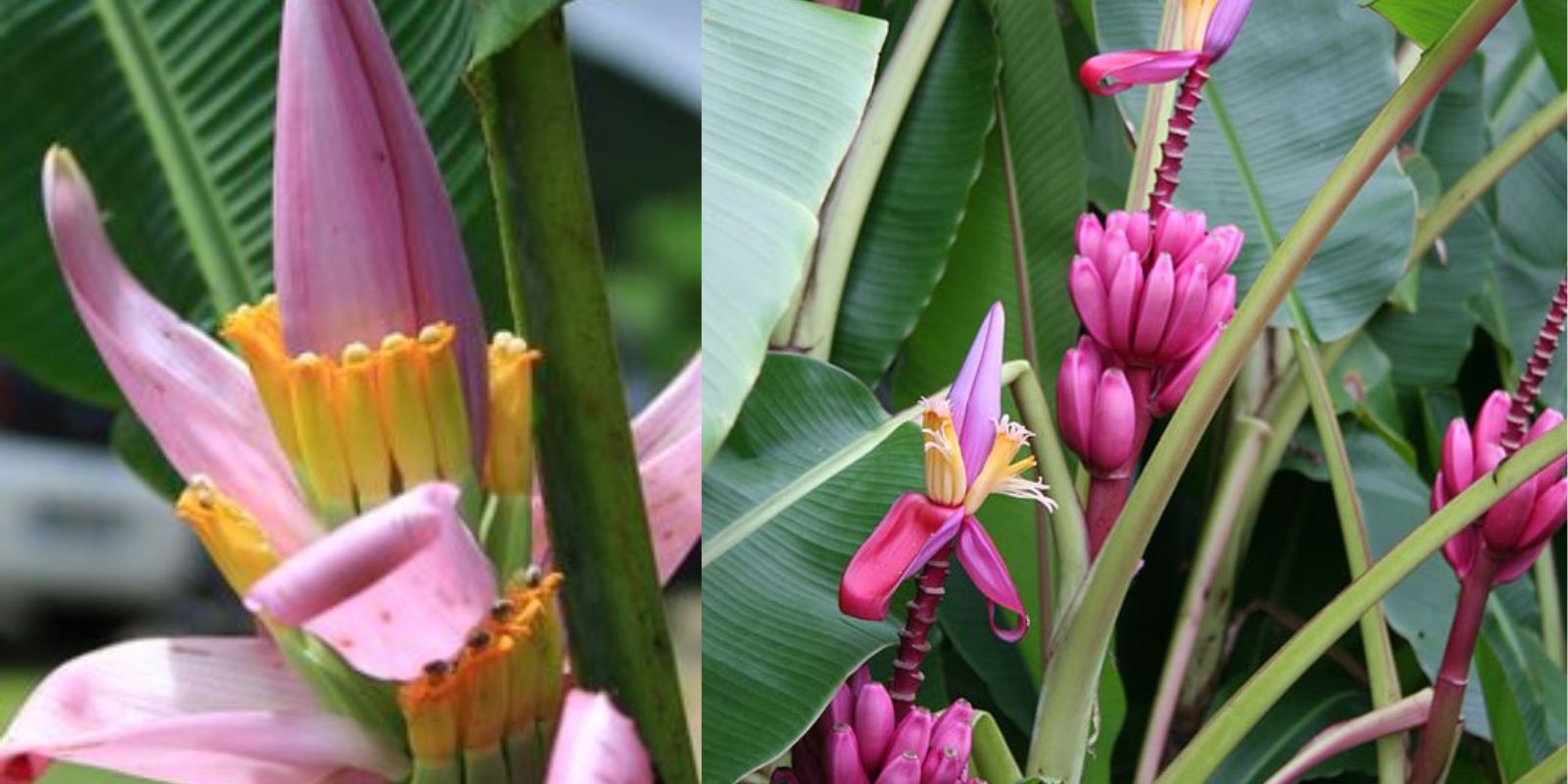Introduction
The Purple Banana Plant, scientifically known as Musa ‘Royal Purple,’ is a botanical gem that brings a splash of dramatic color to any garden or indoor space. Renowned for its striking purple foliage, this tropical plant is a favorite among plant enthusiasts and gardeners seeking to add a touch of exotic elegance. In this comprehensive guide, we will explore the unique characteristics of the Purple Banana Plant, its ideal growing conditions, and practical care tips to ensure it thrives in your home or garden.
Understanding the Purple Banana Plant
Appearance and Characteristics
The Purple Banana Plant is distinguished by its bold, purple-hued leaves and robust growth. Here are some key features:
- Color: The plant’s most notable feature is its vibrant purple foliage, which can range from deep plum to lighter shades of lavender, depending on the light and growing conditions.
- Size: Mature plants can reach heights of 6 to 12 feet (1.8 to 3.6 meters), with large, broad leaves that create a lush, tropical appearance.
- Growth Habit: It has a clumping growth habit, producing multiple stems from a central base. This characteristic makes it an attractive focal point in gardens and as an indoor specimen plant.
Origin and Varieties
Musa ‘Royal Purple’ is a cultivar of the Musa genus, which includes various species of bananas. Native to tropical regions, it is adapted to warm, humid environments. While it is not commonly grown for its fruit, its ornamental value is highly prized.
Ideal Growing Conditions
Location and Light
- Sunlight: The Purple Banana Plant thrives in full sun to partial shade. In outdoor gardens, it should be placed in a location that receives at least 6 hours of direct sunlight daily. If grown indoors, place it near a south-facing window or under grow lights to provide sufficient light.
- Temperature: This plant prefers warm temperatures and is best suited for USDA hardiness zones 10 to 11. It can tolerate temperatures as low as 50°F (10°C) but thrives in temperatures between 65°F to 85°F (18°C to 29°C).
Soil and Drainage
- Soil Type: Use rich, well-draining soil to support healthy growth. A mixture of loamy soil with compost or well-rotted manure works well. Avoid heavy clay soils that retain too much water.
- Drainage: Ensure the planting area or pot has good drainage to prevent waterlogging, which can lead to root rot. If growing in a container, choose a pot with drainage holes.
Planting and Care
Planting the Purple Banana Plant
- Preparation: Before planting, prepare the soil by incorporating compost or organic matter to improve its fertility and drainage.
- Planting: Dig a hole that is twice as wide and just as deep as the root ball. Place the plant in the hole, making sure the top of the root ball is level with the surrounding soil. Backfill with soil and water thoroughly to eliminate air pockets.
Watering and Fertilization
- Watering: Keep the soil consistently moist but not soggy. Water regularly, especially during dry periods. Allow the top inch of soil to dry out between waterings to prevent overwatering.
- Fertilization: Feed the plant with a balanced, all-purpose fertilizer every 4 to 6 weeks during the growing season (spring and summer). Use a fertilizer with equal ratios of nitrogen (N), phosphorus (P), and potassium (K) to support healthy growth.
Pruning and Maintenance
- Pruning: Remove any dead or damaged leaves to promote new growth and maintain the plant’s appearance. Prune back any stems that have become overly tall or unruly to encourage a more compact growth habit.
- Pest and Disease Control: Keep an eye out for common pests such as spider mites, aphids, and scale insects. Treat infestations with insecticidal soap or neem oil. Ensure good air circulation around the plant to prevent fungal diseases.
Growing Indoors vs. Outdoors
Indoor Growing
- Container: Choose a large pot with good drainage to accommodate the plant’s root system. Indoor conditions may require additional humidity, so consider using a humidifier or placing the pot on a tray of pebbles and water.
- Care: Indoor plants may need additional light, especially during the winter months. Rotate the plant regularly to ensure even growth and prevent it from leaning towards the light source.
Outdoor Growing
- Climate: In cooler climates, the Purple Banana Plant can be grown as an annual or moved indoors during colder months. Protect the plant from frost and extreme temperatures by covering it or moving it to a sheltered location.
- Companion Plants: Pair the Purple Banana Plant with other tropical or subtropical plants, such as palms, ferns, or ornamental grasses, to create a lush, exotic garden landscape.
Benefits and Uses
Ornamental Value
The Purple Banana Plant adds dramatic color and texture to gardens and indoor spaces. Its bold foliage makes it a focal point in landscaping and a unique addition to plant collections.
Environmental Benefits
The plant contributes to a healthier environment by improving air quality and providing shade. Its large leaves can also act as a natural filter, trapping dust and pollutants.
Conclusion
The Purple Banana Plant (Musa ‘Royal Purple’) is a captivating and versatile addition to any garden or indoor space. Its stunning purple foliage, combined with relatively easy care, makes it an ideal choice for gardeners and plant lovers looking to add a touch of exotic elegance. By understanding its ideal growing conditions, proper care techniques, and potential uses, you can ensure this beautiful plant thrives and enhances your environment. Embrace the beauty of the Purple Banana Plant and enjoy its vibrant, tropical charm in your home or garden. 🌴💜

